Launching your own AMI instances
Last updated on 2023-09-19 | Edit this page
Do I need to create my own instances?
If you are:
- teaching at or attending a centrally organized Data Carpentry workshop,
- a Maintainer for one of the Genomics lessons,
- contributing to the Genomics lessons, or
- teaching at a self-organized workshop
The Carpentries staff will create AMI instances for you. Please contact team@carpentries.org.
If you are:
- working through these lessons on your own outside of a workshop,
- practicing your skills after a workshop, or
- using these lessons for a teaching demonstration as part of your Instructor checkout for The Carpentries,
you will need to create your own AMI instances using the instructions below. The cost of using this AMI for a few days, with the t2.medium instance type is about USD $1.20 per day. Data Carpentry has no control over AWS pricing structure and provides this cost estimate with no guarantees. Please see the EC2 pricing page for up-to-date information.
Launching an instance on Amazon Web Services
Prerequisites
- Form of payment (credit card)
- Understanding of Amazon’s billing and payment (See: Getting started with AWS Billing and Cost Management)
- You can use some of Amazon Web Services for free, or see if you qualify for an AWS Grant (See: https://aws.amazon.com/grants/ ) if you are using AWS for education. The free level of service will not be sufficient for working with the amount of data we are using for our lessons.
Create an AWS account
1. Go to Amazon Web Services https://aws.amazon.com/
2. Follow the button to sign up for an account - you will need to agree to Amazon’s terms and conditions and provide credit card information.
Sign into AWS and Launch an Instance
1. Sign into the AWS EC2 Dashboard: https://console.aws.amazon.com/ec2/
2. Click the ‘Launch Instance’ button

3. Under ‘Application and OS Images (Amazon Machine Image)’ search for the AMI listed on this curriculum’s Setup page
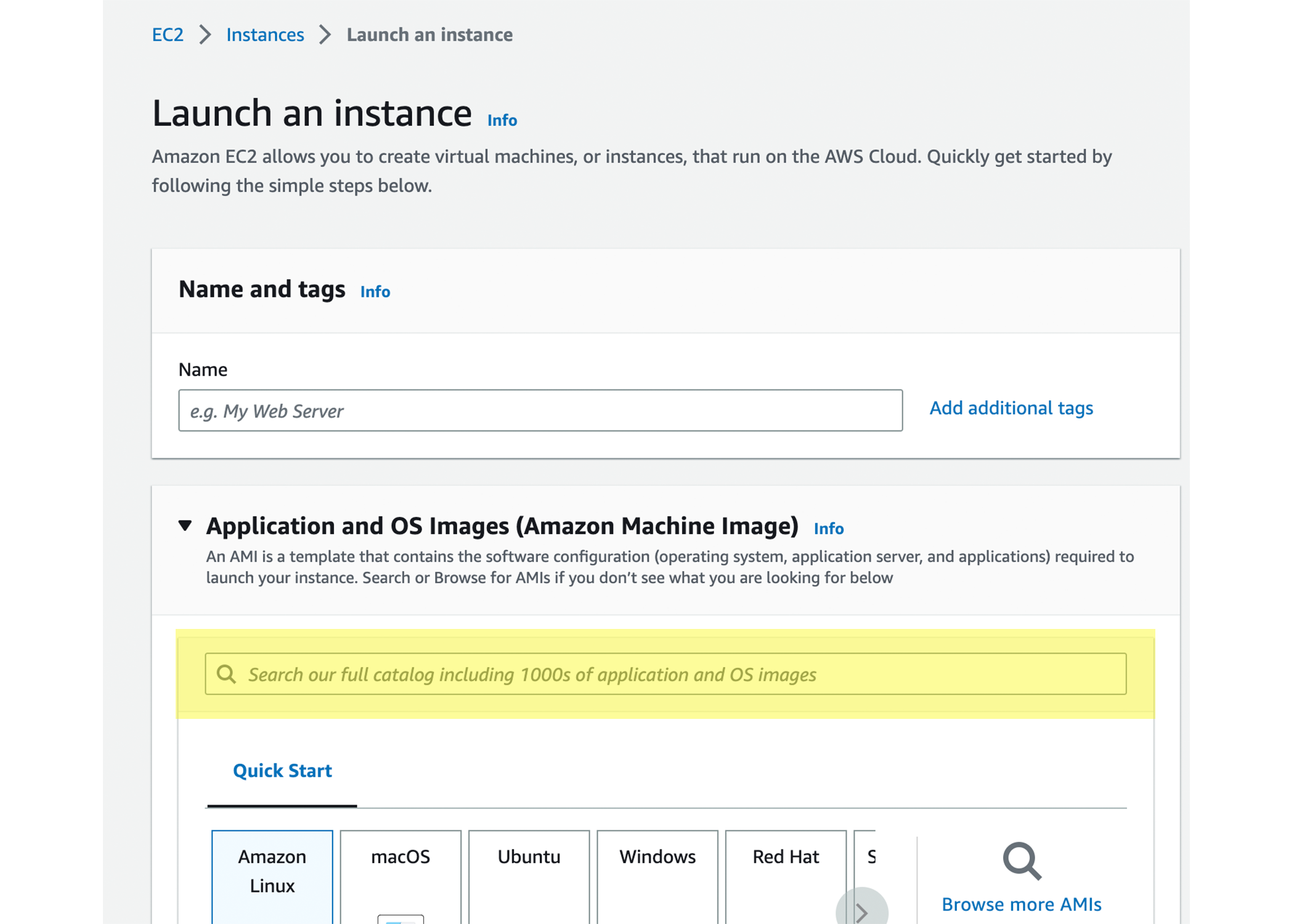
4. Click “Community AMIs”, and then select that image

5. Under ‘Instance type’ click “Compare instance types” and and then select t2.medium; click “Select instance type”

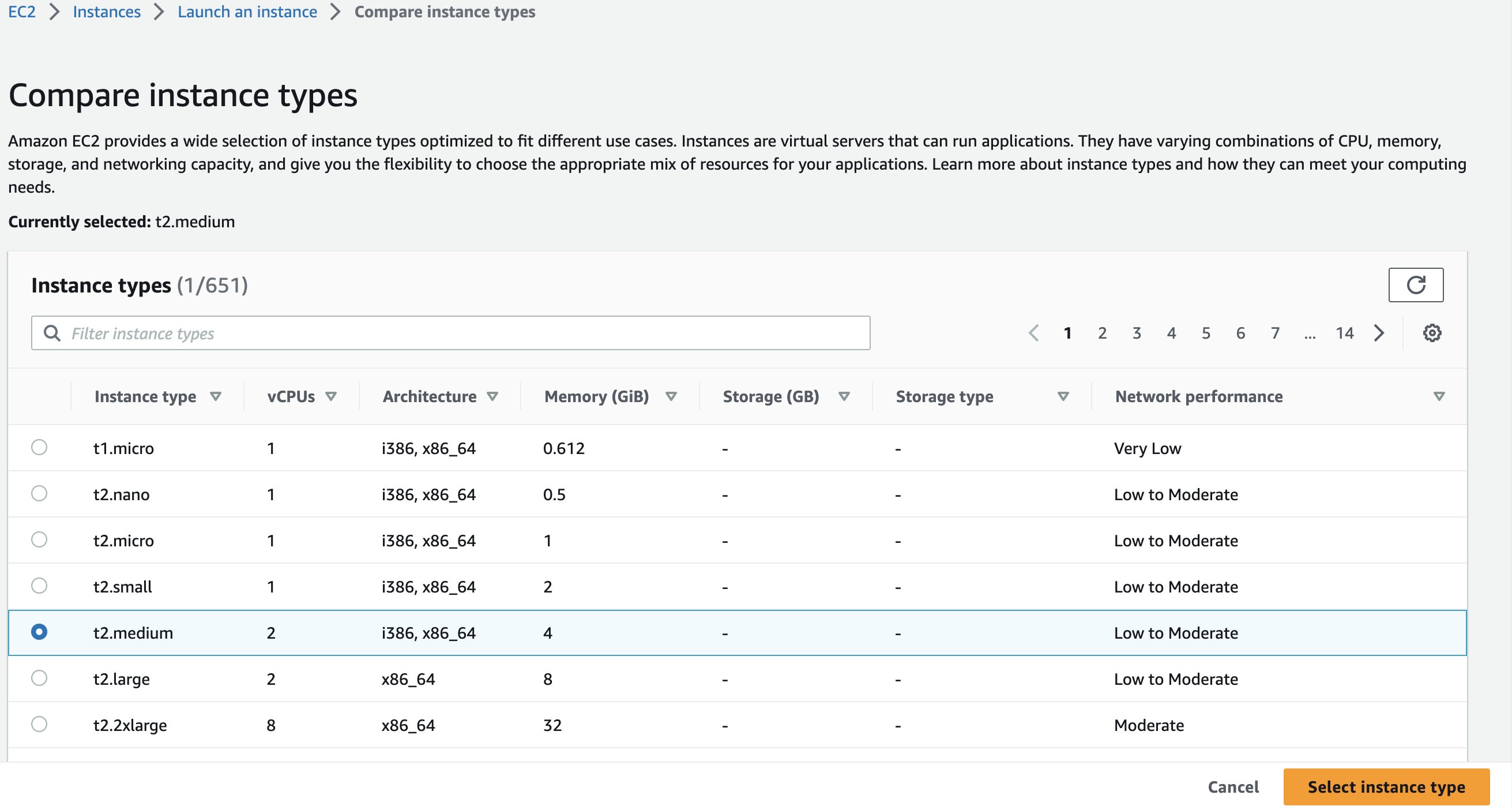
6. Under ‘Key pair (login)’ click “Create a new key pair”

7. Enter a name for your key pair. Select “RSA” under ‘Key pair type’
and “.pem” under ‘Private key file format’. Click “Create key pair”;
this will download your key pair file, which ends in .pem.
Move it from your Downloads folder to a stable location on your
computer. For these instructions, we will move it to our Desktop. You
can do this by dragging and dropping the file from your Downloads folder
to your desktop.
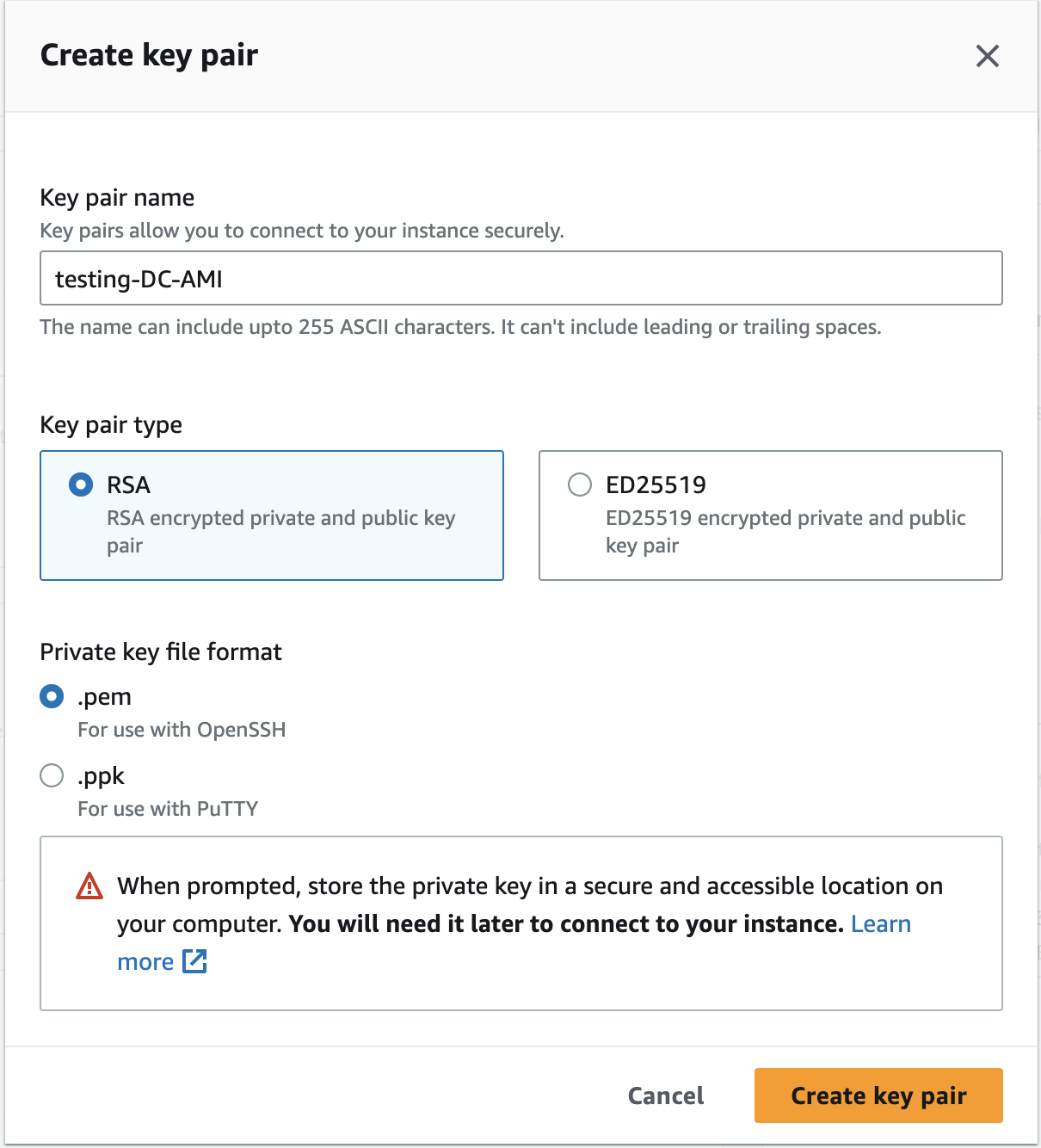
8. Scroll down to ‘Network settings’. If this is your first time working with this AMI on your AWS account, choose “create a new security group”. Click “Edit”.
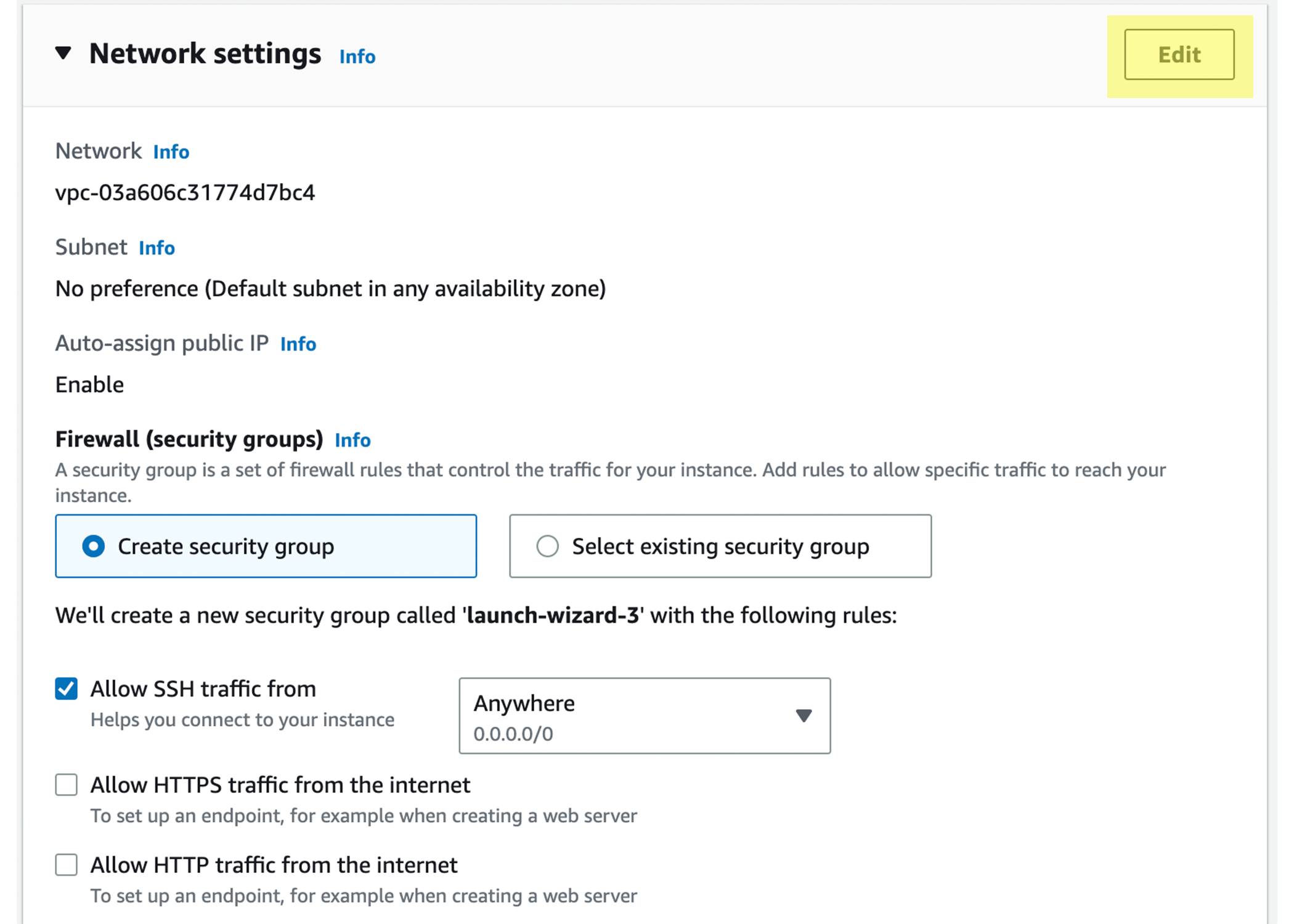
9. Name your security group something descriptive (for example “DC-genomics-AMI”) and enter a description into the description box (for example “to use with DC genomics AMI”).
Your security group should now look like this:

10. Click “Add security group rule”. A new row will appear. Under ‘Type’ select “Custom TCP” and enter “8787” into box labeled “Port Range”. Under “Source type”, select “Anywhere”. You should now see a screen that looks like this:
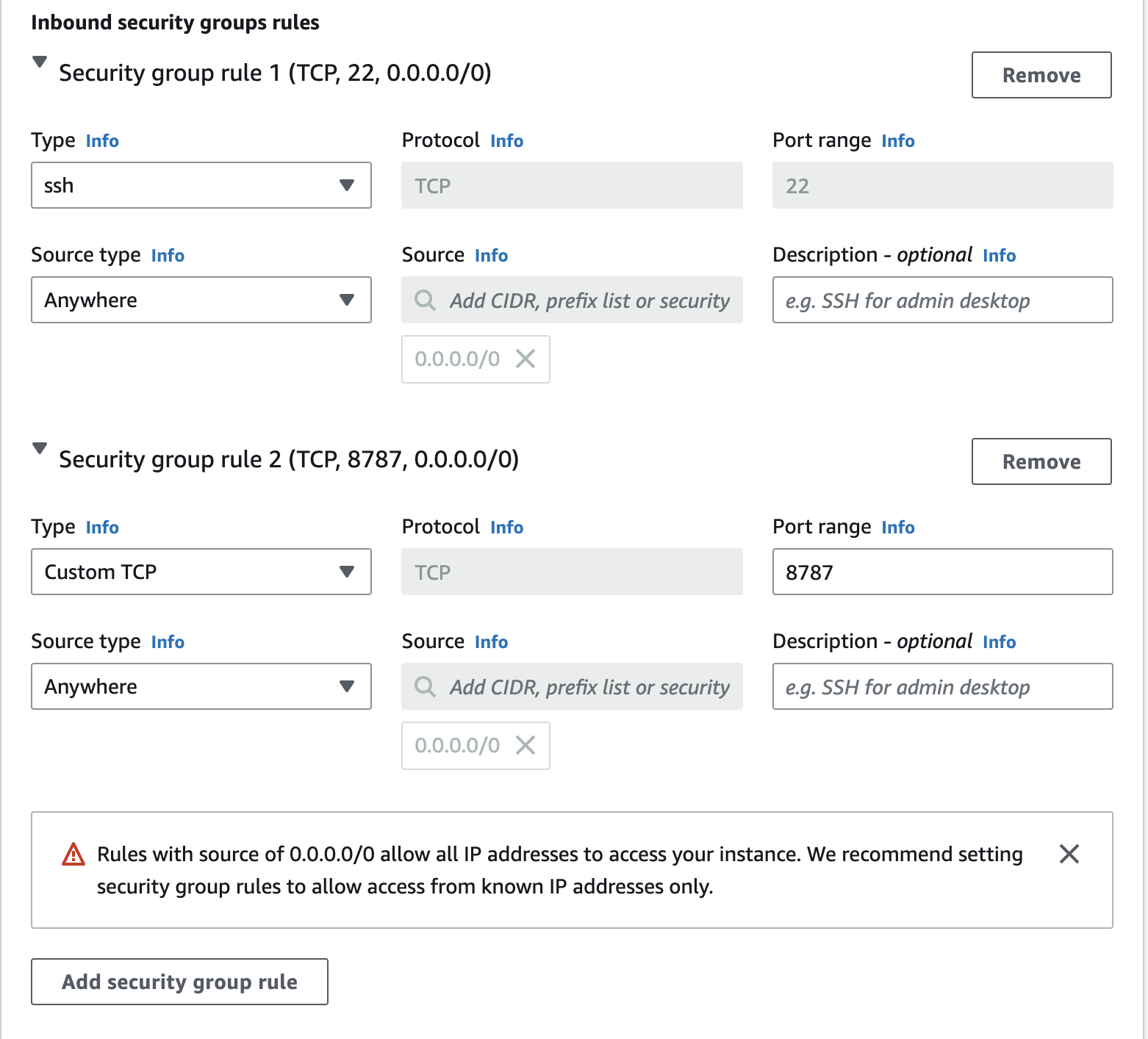
11. Under ‘Summary’ on the right side of the screen, you should now see a screen that looks like this. Click “Launch Instance”.
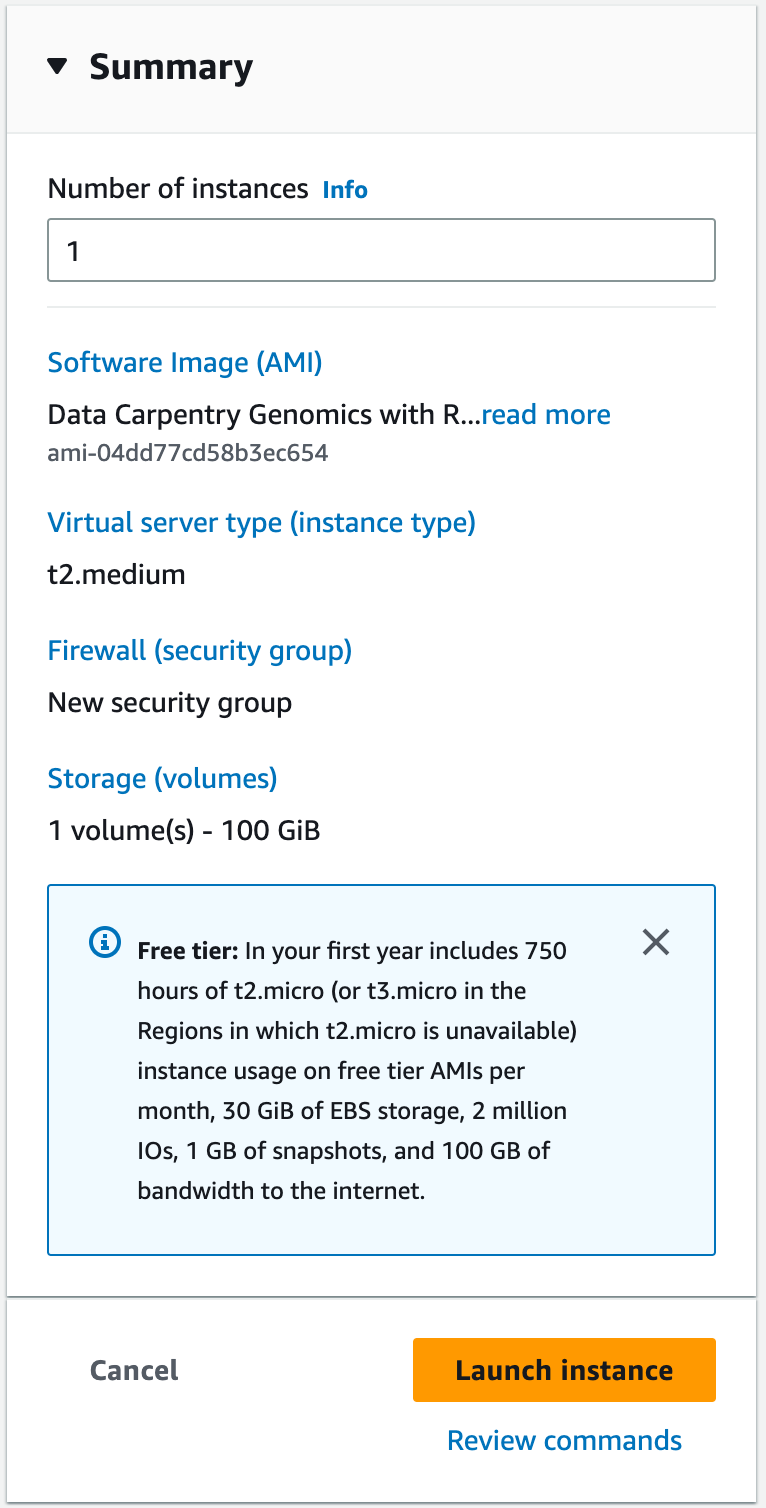
You instance will now be launched. You should follow the links to ‘Create billing alerts’ and then the instructions below for connecting to and terminating your Amazon Instance.
Log into your AWC EC2 Dashboard https://console.aws.amazon.com/ec2/
You should see that you have one instance. To proceed, the instance state must be ‘running’ (if you just launched the instance it will take <5 min for the instance to start running).

- At the bottom of the dashboard, you should see a Public IPv4 DNS which will look something like ec2-18-212-60-130.compute-1.amazonaws.com. Copy that address (you may wish make a note of it as you will need this each time you connect.)
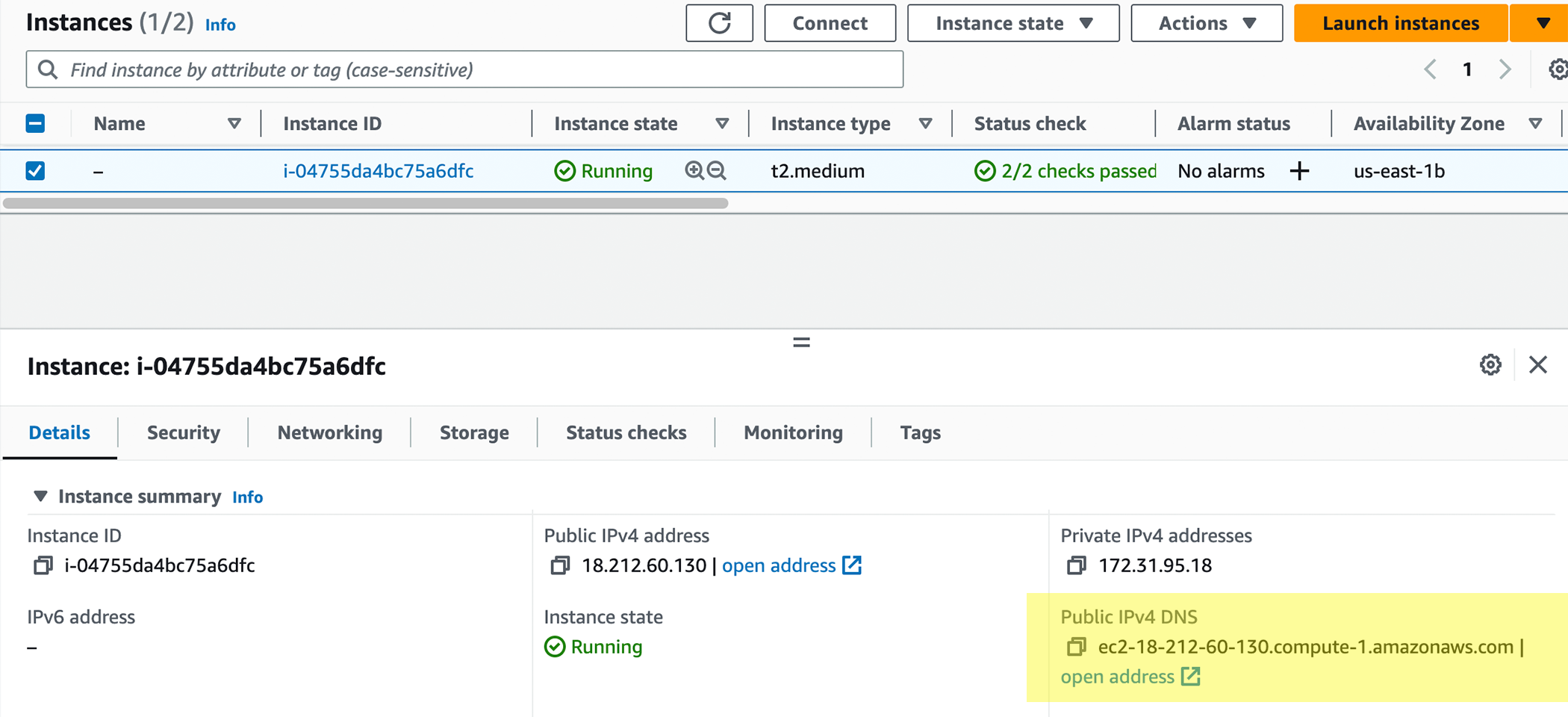
- Open the terminal application on your computer. Use the following commands to navigate to your Desktop and modify the file permissions for your key pair file.
- You can now connect to your instance using ‘ssh’. Your command will be something like this:
Use dcuser as the username, but be sure to replace
ec2-18-212-60-130.compute-1.amazonaws.com with the DNS for
your image. You may be notified that the authenticity of the host cannot
be verified - if so, ignore the warning an continue connecting
- When prompted, enter the password
data4Carp
You should now be connected to your personal instance. You can
confirm that you are in the correct location by using the
whoami and pwd commands, which should yield
the following results:
Download the PuTTY application at: http://the.earth.li/~sgtatham/putty/latest/x86/putty.exe
Log into your AWC EC2 Dashboard https://console.aws.amazon.com/ec2/
You should see that you have one instance, make sure instance state is ‘running’ (if you just launched the instance it will take <5 min for the instance to start running)

- At the bottom of the dashboard, you should see a Public IPv4 DNS which will look something like ec2-18-212-60-130.compute-1.amazonaws.com. Copy that address (you may wish make a note of it as you will need this each time you connect.)

Start PuTTY. In the section ‘Specify the destination you want to connect to’ for ‘Host Name (or IP address)’ paste in the DNS address and click ‘Open’
When prompted to login as, enter ‘dcuser’; you may be notified that the authenticity of the host cannot be verified - if so, ignore the warning an continue connecting
When prompted, enter the password
data4Carp
You should now be connected to your personal instance. You can
confirm this with the following commands; whoami and
pwd, which should yield the following results:
Terminating your instance
Very Important Warning - Avoid Unwanted Charges
Please remember, for as long as this instance is running, you will be charged for your usage. You can see an estimate of the current charge from your AWS EC2 dashboard by clicking your name (Account name) on the upper right of the dashboard and selecting ‘Billing & Cost Management’. DO NOT FORGET TO TERMINATE YOUR INSTANCE WHEN YOU ARE DONE
When you are finished with your instance, you must terminate it to avoid unwanted charges. Follow the following steps.
- Sign into AWS and go to the EC2 Dashboard: https://console.aws.amazon.com/ec2/
- Under ‘Resources’ select ‘Running Instances’
- Select the instance you wish to terminate, then click ‘Instance state’ and select ‘Terminate instance’
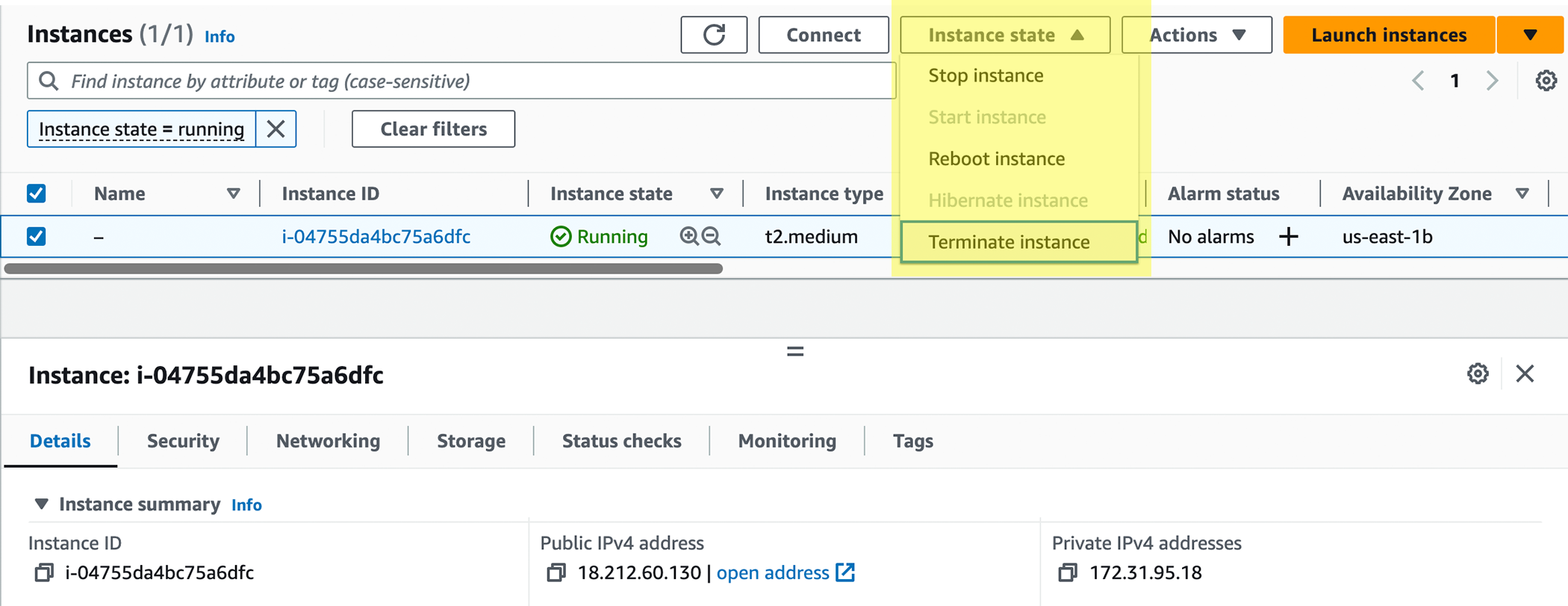
- Select ‘Terminate’ to terminate the instance.
